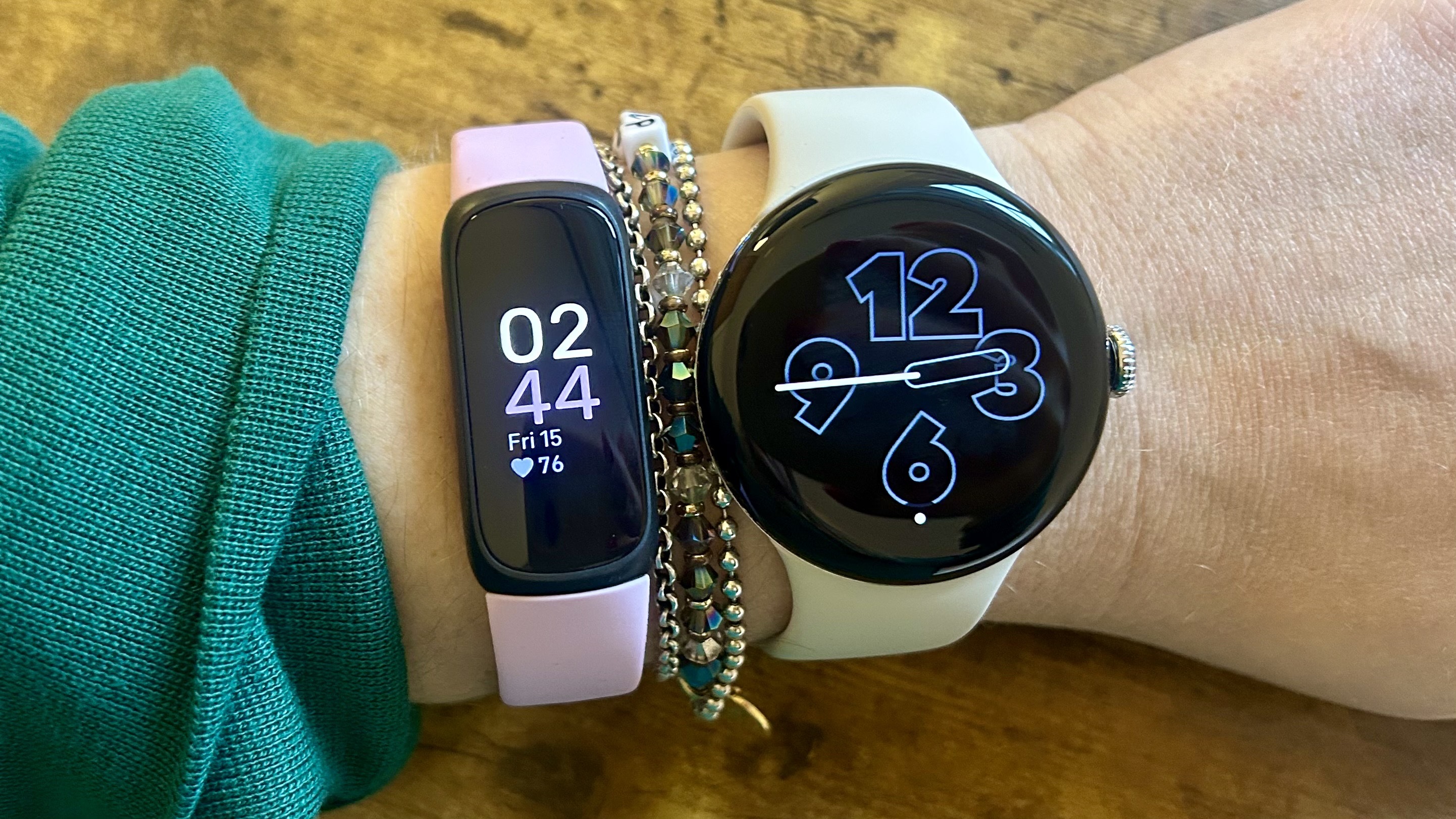I walked 5,000 steps with the Google Pixel Watch 2 and Fitbit Inspire 3 — this was way more accurate
I put the two Google-owned trackers to the test

It’s the time of year when we all start to think about 2024 fitness goals, and whether yours is to get in shape, or just add more steps to your daily routine, you might be thinking about upgrading your fitness tracker or smartwatch. Yet if you’ve been looking at the Google Pixel Watch 2 and the more affordable Fitbit Inspire 3, you might be wondering which of the two trackers is more accurate. Here’s where I step in.
As a fitness editor, it’s my job to test some of the best tech on the market, and I love nothing more than putting devices head-to-head to help you work out which is best for you. The Google Pixel Watch 2 ($349 for Wi-Fi/$399 for LTE model) has several advanced smartwatch features you won’t find on the Fitbit and is one of the best smartwatches on the market.
Meanwhile, the $99/£84.99 Inspire 3 is one of the best Fitbits available and best cheap fitness trackers — you’re getting an awful lot for your money, and it has a beautiful, bright screen. Just don't expect built-in GPS at this price.
Both trackers use Fitbit to track your steps, calories and sleep. For both, you’ll need to pay for a Fitbit Premium membership. You get 6 months free when you register your new device, but after that, you’ll have to pay $9.99 per month, or $80 a year. But which is more accurate when it comes to counting your steps? To find out more, I strapped the Google Pixel Watch 2 and the Fitbit Inspire 3 to my wrist.
I walked 5,000 steps with the Google Pixel Watch 2 and Fitbit Inspire 3 — here’s which was more accurate
Tom’s Guide fitness fans will know that this isn’t my first walking challenge — you can read what happened when I walked over 10,000 steps with the Apple Watch 9 and the Fitbit Inspire 3. Like with a lot of these challenges, I used a $7.99 tally counter from Amazon where I’d manually click each time I took a step. When I got home, I downloaded the data from the Google Pixel Watch 2 onto my Google Pixel 7, and the Fitbit Inspire 3 onto my iPhone 14, as Fitbit doesn’t allow you to have two devices connected to your account at one time.
The Google Pixel Watch 2 recorded my walk as 39 minutes long, covering 2.5 miles at a pace of 15:55 per mile. The Fitbit Inspire 3 recorded the walk as 39 minutes but said I only covered 1.98 miles, and that I was walking at a pace of 19:58. This difference is pretty significant, but is probably down to the fact the cheaper tracker does not have built-in GPS, so was relying on my phone signal, which definitely drops on parts of my daily walk.
But what about the steps? Here are the results:
Get instant access to breaking news, the hottest reviews, great deals and helpful tips.
The results
| Row 0 - Cell 0 | Steps |
| Manual recording | 5,020 |
| Google Pixel Watch 2 | 5,018 |
| Fitbit Inspire 3 | 4,844 |
As you can see, the clear winner here in terms of accuracy is the Google Pixel Watch 2, which only missed two of my steps! That’s not to say, however, that the Fitbit Inspire 3 is poor — 176 steps isn’t enough to disregard the tracker entirely. It’s worth noting that no fitness tracker will be 100% accurate at counting every single step — I’m five foot two, and have quite a short stride. When I’m running, I often find I have a high cadence because of this. What’s more, fitness trackers do a lot more than just tracking your steps, and counting steps alone isn’t the best metric when it comes to getting fitter and losing weight. That said, it’s a good place to start.
10,000 steps is the equivalent of walking around 5 miles per day, which might sound like a lot, but might mean taking the stairs, not the elevator, getting off the subway a couple of stops early, or meeting a friend for a walk at lunch, not sitting in a coffee shop. There are several benefits of walking more, including losing weight, building muscle, and feeling less stressed. Here’s what 30-minutes of walking each day can do for your body.
More from Tom's Guide
- I walked 5,500 steps with the Google Pixel Watch 2 and Fitbit Charge 6 — here’s which was more accurate
- Best fitness gifts for everyone on your list
- I walked 5,000 steps with the Apple Watch 9 and Apple Watch 8 — and the results are surprising

Jane McGuire is Tom's Guide's Fitness editor, which means she looks after everything fitness related - from running gear to yoga mats. An avid runner, Jane has tested and reviewed fitness products for the past five years, so knows what to look for when finding a good running watch or a pair of shorts with pockets big enough for your smartphone. When she's not pounding the pavements, you'll find Jane striding round the Surrey Hills, taking far too many photos of her puppy.
